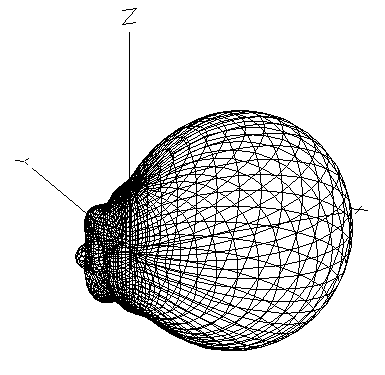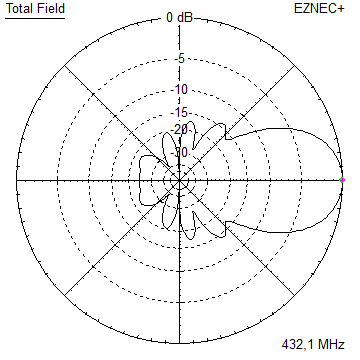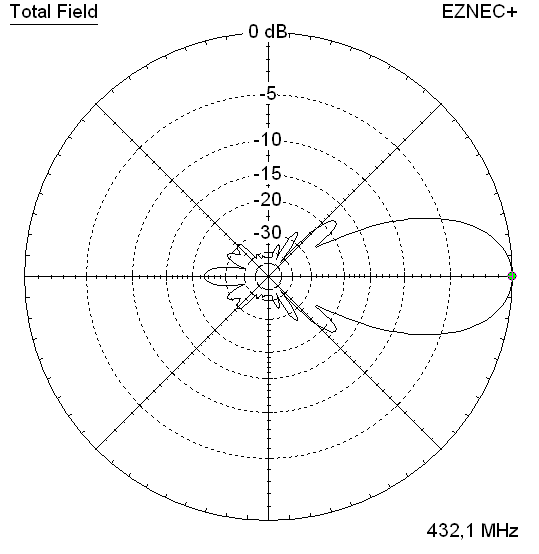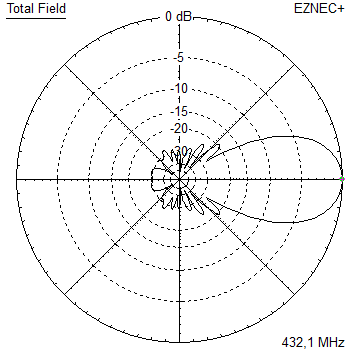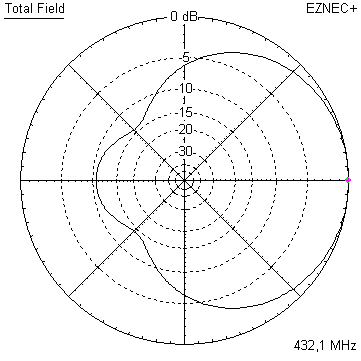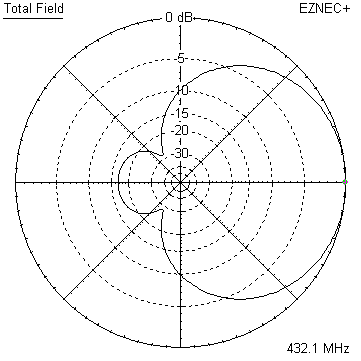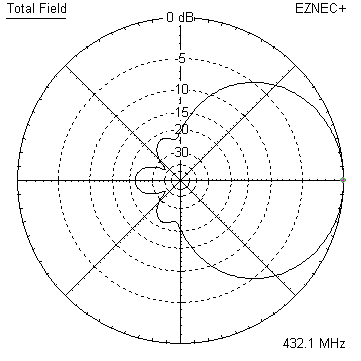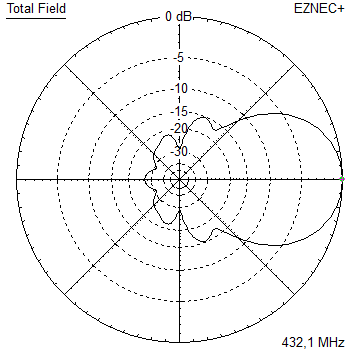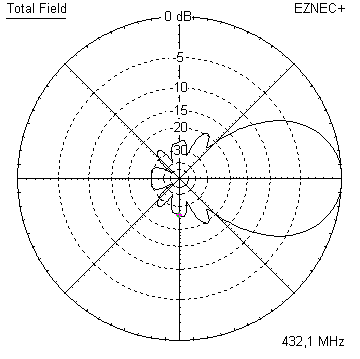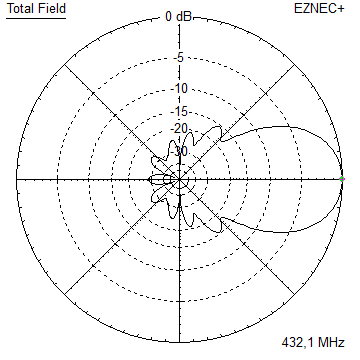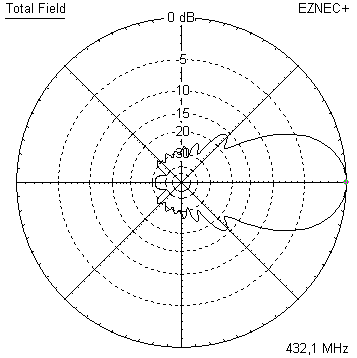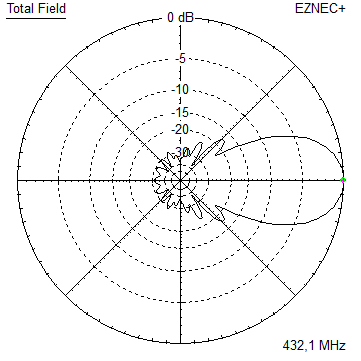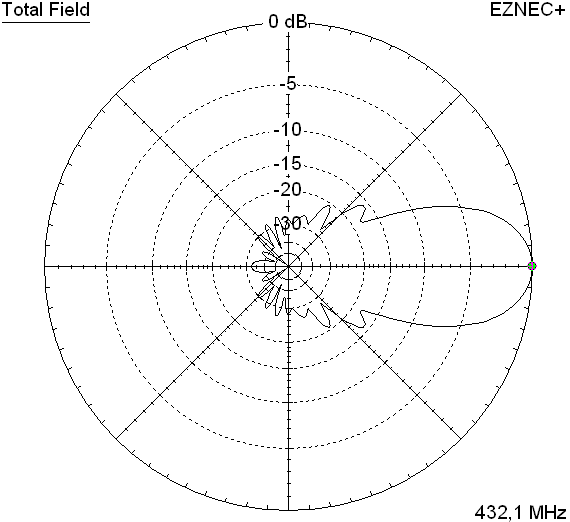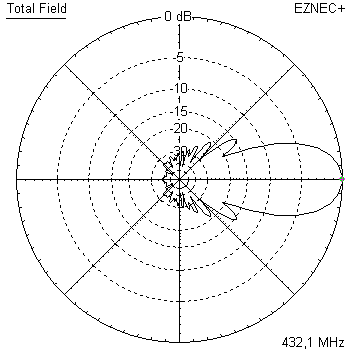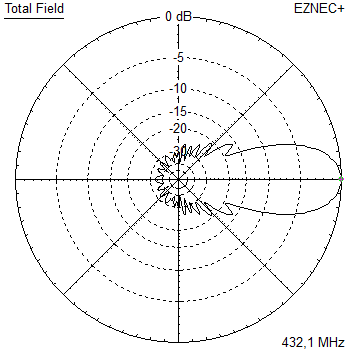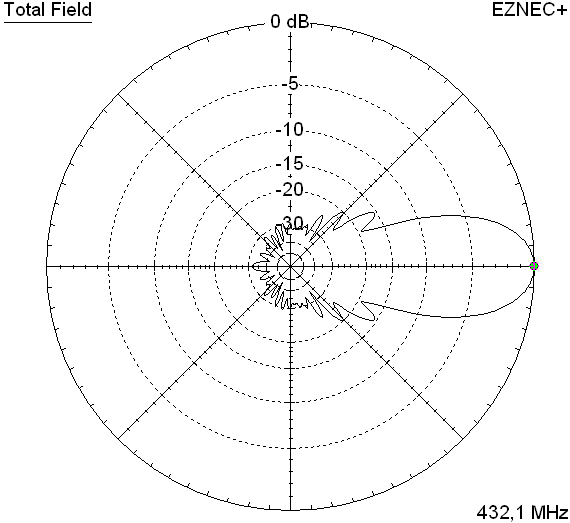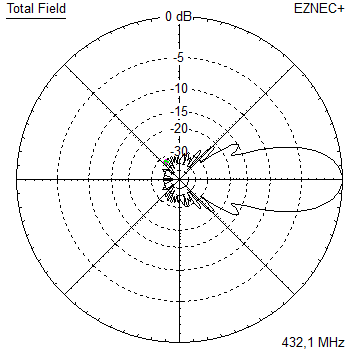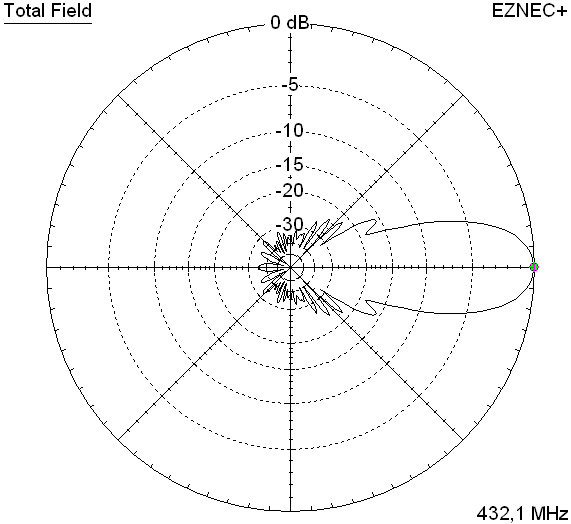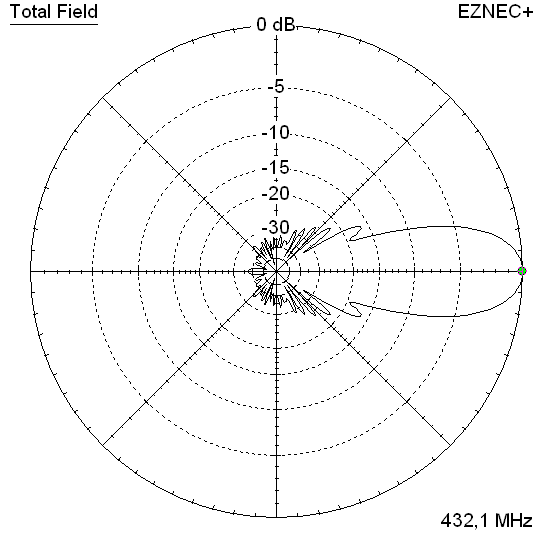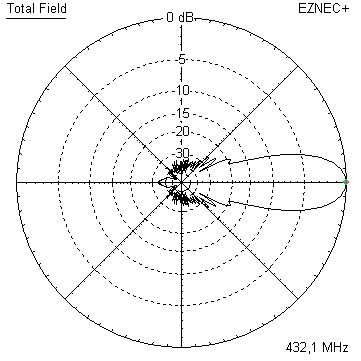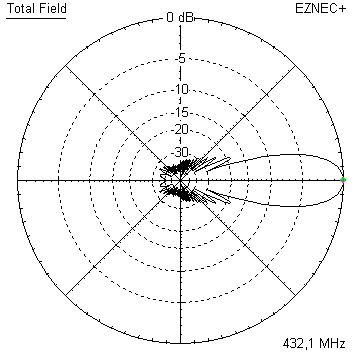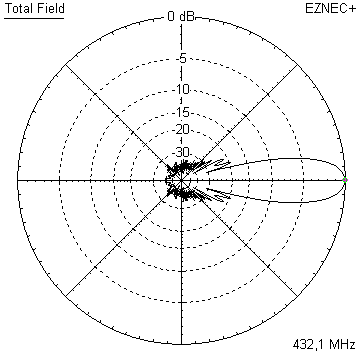
GTV 70-18w Yagi with bent Driven Element
Wideband version covering the full 70 cm band with nice G/T at EME & SSB part of band
This Yagi has very low back lobes for its length. It may serve as single antenna for portable
use and certainly make a useful 4 x vertical stack. It makes a quiet contest antenna due to its
high F/B. The bent DE (K6STI style) transforms from approx. 17 ohms to 50 ohms at feed point.
This Yagi is based on the GTV 2-18w design. Date of issuing this design: 22nd of Aug. 2021
Current distribution


Performance Data
Specs: with 8 mm elements @ 432.1 MHz
Gain vs. isotr. Rad. 17.6 dBi Gain vs. Dipole 15.4 dBD -3 dB E-plane 25.8 deg. -3 dB H-plane 26.8 deg. F/B -33.5 dB F/R -30.1 dB Impedance 50 ohms Mechan. Length 3969 mm incl. 2 x 40 mm stand off Electr. Length 5.61 λ VSWR Bandwidth 1:1.08 (as in VE7BQH Antenna Table) Stacking dist. h-pol. top-to-bottom 1.51 m or 4.95 ft side-by-side 1.57 m or 5.14 ft
How many OMs have been looking up this design?
Geometry
Ø8 mm Elements - On Boom - Dimensions (BC acc. DG7YBN)

|
Ele. 8.0 mm DE 10 mm Boom 20 x 20 mm |
"Ready to saw and drill" data for mounting elements on boom with BC according DG7YBN for standard insulators as sold by WiMo, Tino's Funkshop, 7arrays, HF-Kits.nl:
Includes an SBC of 1.14 mm

Ø8 mm Elements - On Boom - Dimensions (BC acc. DG7YBN)

|
Ele. 8.0 mm DE 10 mm Boom 25 x 25 mm |
"Ready to saw and drill" data for mounting elements on boom with BC according DG7YBN for standard insulators as sold by WiMo, Tino's Funkshop, 7arrays, HF-Kits.nl:
Includes an SBC of 1.14 mm


Table 2: GTV 70-21n, 4 mm elements through boom:
"Ready to saw and drill" data for mounting elements through boom with BC according SM5BSZ's BC.exe:
Note: with through Boom BC it is important to stick to the boom end offsets given below!
Metric Boom 20 x 20 x 2 mm
|
Boom shape: square Boom dim: 20 x 20 mm Wall thickn.: 2.0 mm Holes in boom: 6.0 mm Offset rear: 40 mm Offset front: 40 mm |
|
Note: with through Boom BC it is important to stick to the boom end offsets given below!
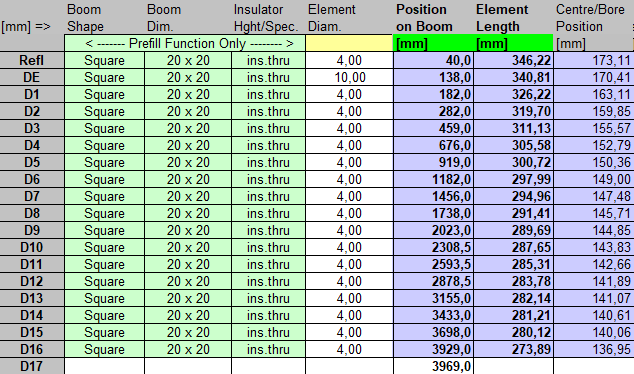
Metric Boom 25 x 25 x 2 mm
|
Boom shape: square Boom dim: 25 x 25 mm Wall thickn.: 2.0 mm Holes in boom: 6.0 mm Offset rear: 40 mm Offset front: 40 mm |
|
Note: with through Boom BC it is important to stick to the boom end offsets given below!

Imperial Boom 1" - El. 4.00 mm
|
Boom shape: square Boom dim: 1 x 1 inch Wall thickn.: 1.6 mm Holes in boom: 6.0 mm Offset rear: 40 mm Offset front: 40 mm |
|
Note: All the above include a "Segmentation Density Correction" (SBC) of 1.14 mm plus an offset of 0.70 mm per element = 1.84 mm
for compensation of the insulators (7arrays.com
Note: with through Boom BC it is important to stick to the boom end offsets given below!
Read abt. the SBC here

Imperial Boom 1" - El. 4.763 mm or 3/16 inch
|
Boom shape: square Boom dim: 1 x 1 inch Wall thickn.: 1.4 mm Holes in boom: 7.7 mm Offset rear: 40 mm Offset front: 40 mm |
|
Note: All the above include a "Segmentation Density Correction" (SBC) of 1.14 mm plus an offset of 0.70 mm per element = 1.84 mm
for compensation of the insulators in combination with SM5BSZ'S BC.exe values.
Note: with through Boom BC it is important to stick to the boom end offsets given below!
Read abt. the SBC here
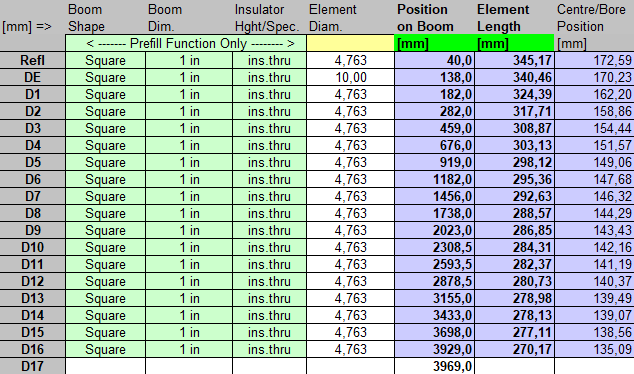
For making of a 'Blade Dipole'
Sketch of Bent Dipole
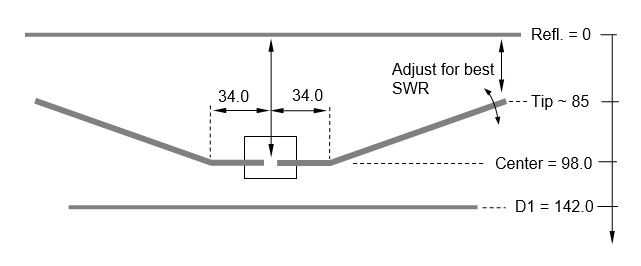
Radiation Pattern and VSWR Plots
Elevation and Azimuth plot at 432.1 MHz (8 mm ele.)

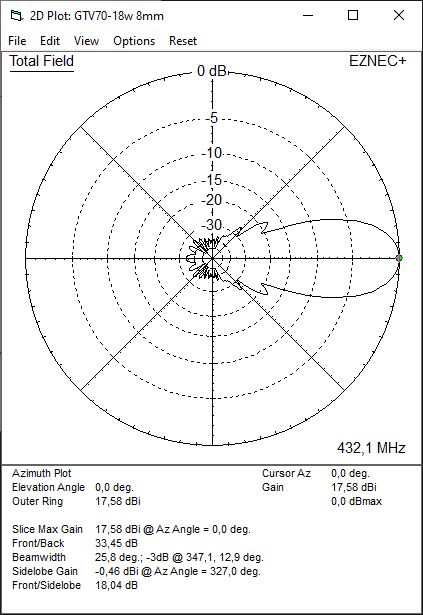
Elevation and Azimuth plot at 435 MHz (8 mm ele.)

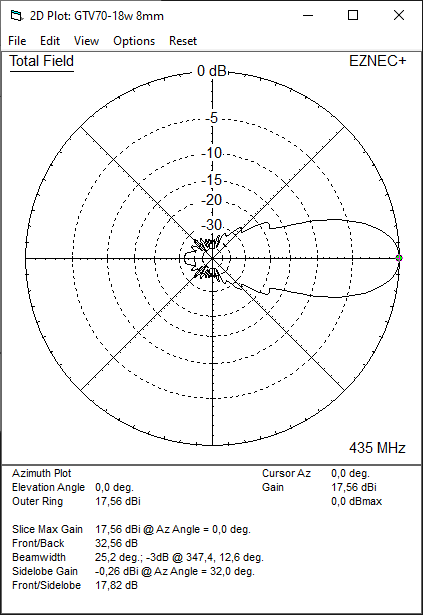
Elevation and Azimuth plot at 439 MHz (8 mm ele.)
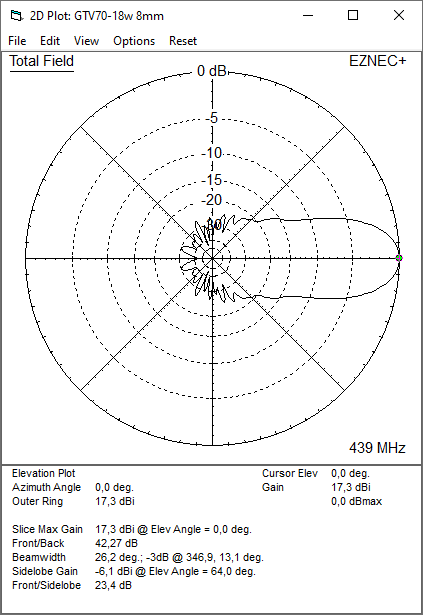

VSWR and Return Loss plots - simulated with 4nec2

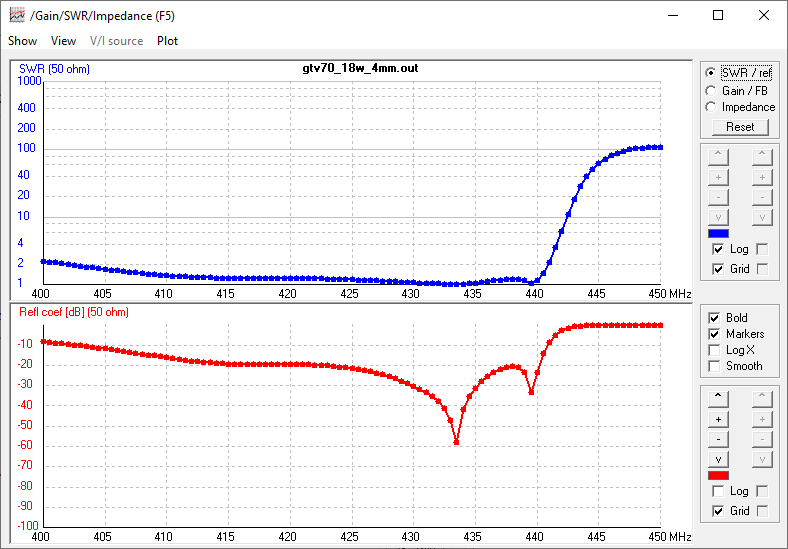
This Yagi as XPOL 435 MHz Version

EZ/AZ Plot (4 mm ele.):
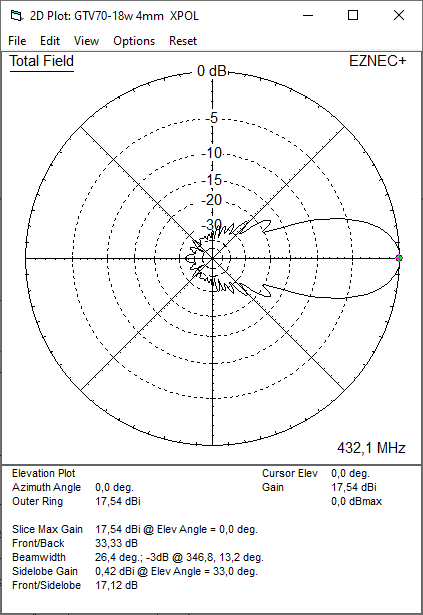
h/v-plane offset = 680 mm,
Stacking per DL6WU h/v mean dist. = 1.54 m
This Yagi with 4 mm elements through a 25 x 25 mm boom Metric Boom 25 x 25 x 2 mm
|
Boom shape: square Boom dim: 25 x 25 mm Wall thickn.: 2.0 mm Holes in boom: 6.0 mm Offset rear: 40 mm h-plane,720 mm v-plane Offset front: 720 mm h-plane, 40 mm v-plane |
|
Note: with through Boom BC it is important to stick to the boom end offsets given below!
Includes an SBC of 1.84 mm

Stacking
As on 432 MHz the Y-factor = T_earth / T_sky is so high, I see little chances to
improve an array's RX performance by using "Over Stacking" distances. However, depending on
the level of local QRM it might be worthwhile to try a decreased distance, especially in the H-plane.
Stacking Dist. DL6WU Formula H-plane 1.51 m or 4.95 ft E-plane 1.57 m or 5.14 ft
A 4 Yagi bay
Elev. Plot

Azim. Plot
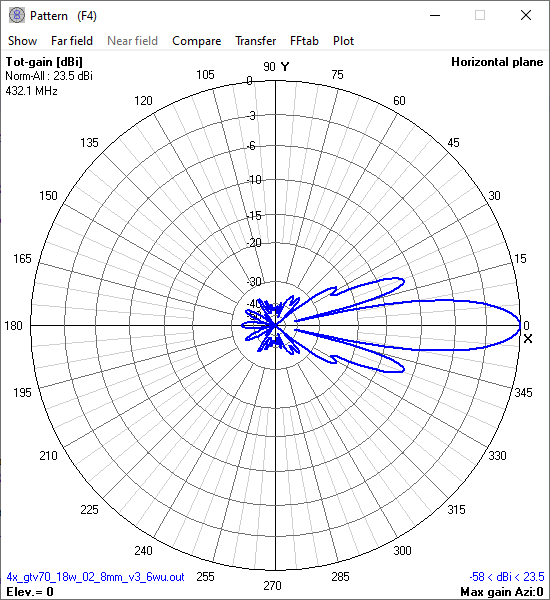
4 bay data (8 mm ele.):
Gain vs. isotr. Rad. 23.5 dBi Gain vs. Dipole 21.3 dBD -3 dB H-plane, appr. 5.8 deg. -3 dB E-plane, appr. 5.8 deg. F/B -34.0 dB F/R -30.1 dB T_ant, total 61.8 K* G/T 5.56 dB* at Tsky = 27 K, Tearth = 1800 K as in newer VE7BQH Antenna Table
3D pattern plot with 4nec2's 3D viewer
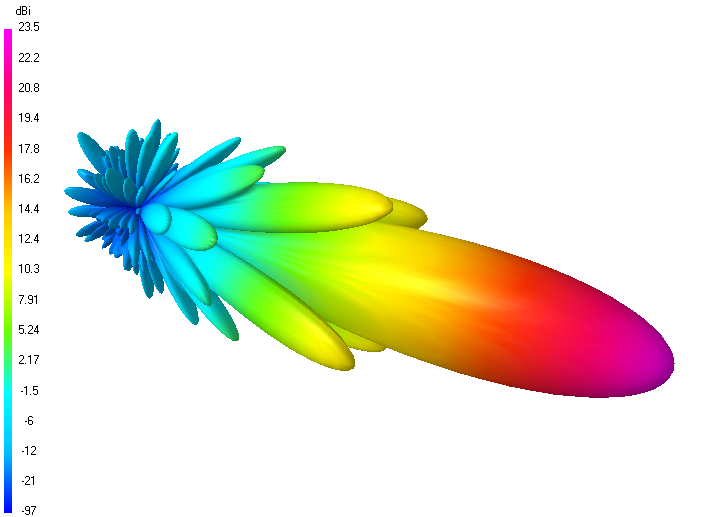
Antenna G/T with AGTC lite VBA-version:

Symmetrising 50 to 50 ohms feedline to 432 MHz Bent DE
The principle is similar to the 1/4 Lambda coax. Adding 2 x 1/4 Lambda or a half wave line does not change anything but allows
to form a gentle bow below the boom or until behind the Reflector. Follow practical construction hints on "Building a Yagi" page.
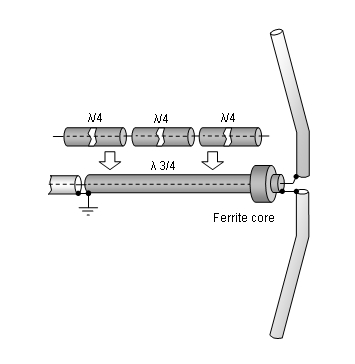
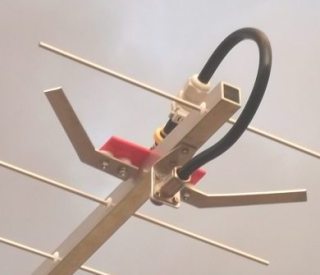
 Attenzione!
Take care when lengthening the coax, measure the actual electrical length instead of considering v-factors specified in a catalogue only.
Attenzione!
Take care when lengthening the coax, measure the actual electrical length instead of considering v-factors specified in a catalogue only.A good choice may be the diam. 5 mm PTFE coax RG-142 B/U: real resonate length (432.2 MHz as 3/4 Lambda) shield-shield is around 348 mm
 Find more information on Phasing & Matching Lines page
Find more information on Phasing & Matching Lines page 73, Hartmut, DG7YBN
